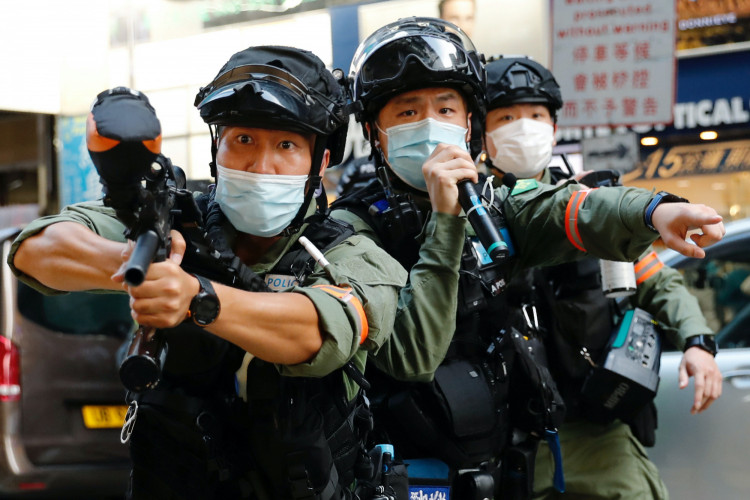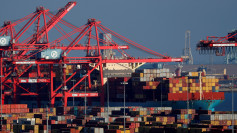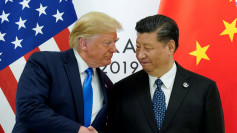The weekend arrest of a Hong Kong bus driver by riot police for reckless driving and weapons possession sparked an industry-wide outcry this week after it emerged he was driving below the speed limit and that his "weapon" was nothing more than a wrench.
Around 4 pm on Sunday, a New World First Bus (NWFB) driver operating a route 960 bus to Hong Kong island via Nathan Road drew police attention after honking at riot police stationed nearby – an action the police presumably felt indicated the bus driver was against their presence at the site of pro-democracy protests the same day.
The driver "drove very fast and very close to police officers standing by the roadside, endangering their safety,” a police statement said. The bus was boarded and the driver taken into custody, where he was found to be carrying a wrench – leading the police to charge the man with possession of an offensive weapon.
But a later review of camera footage from the scene showed the bus traveling at approximately 30 kilometers per hour – well under the maximum speed of 50 km/h posted on that stretch of road.
The Bus Industry Union, which claims to represent the city’s bus drivers and other workers in the sector, issued a statement on Wednesday condemning the arrest. “The bus industry is extremely dissatisfied with police behaviour ... which makes frontline drivers very scared,” the statement reads in Cantonese.
Netizens were quick to note that wrenches are a commonplace tool for bus drivers, who use the device to tighten side mirrors, but police have defended seizing the tool because of its potential uses as a weapon.
“When the driver was taken back to the police station, the officers seized a spanner in his bag and arrested him again for a hidden offensive weapon,” police public relations superintendent John Tse wrote in response to a local media report accusing the force of arbitrary detention.
Bus Drivers Issue Ultimatum
The statement by the recently formed union includes five demands for the police and government that must be met by Friday afternoon, promising further action if not.
“[We request] that the police explain why drivers are being arrested and to explain how buses can be used as the offensive weapon officers seem to believe them to be,” the statement issued by the union reads.
The Bus Industry Union also asked the police to apologize to arrested drivers, along with passengers or passerbys who witnessed the arrests, and to engage in talks with the bus union.
A deeper police probe is now underway, according to authorities. “An in-depth investigation will be conducted, including a review of relevant driving records and nearby closed-circuit television footage,” Tse noted.
But this falls short of the independent inquiry requested by the group. They demanded that the government launch an investigation into the matter that the department of justice guarantees will be “open, public, fair and just.”
The recently formed union counts around 100 bus drivers and workers as members, according to the Hong Kong Free Press. If the demands are not met, they threaten to take non-specified work action in cooperation with the city’s non-public bus companies and the five largest public bus companies that provide services across the region.
The list of requests concludes with a call to action encouraging members of the bus industry, along with the general public, to support the arrested driver and hold the police accountable.
Transportation Groups Caught in Crossfire
The requests by the union represent a boiling point between police and bus drivers that has been several years in the making, as well as growing frustration at a lack of transparency on the part of Hong Kong police.
Buses have been a particularly unwitting victim of the pro-democracy unrest in Hong Kong, as tear gas and rubber bullets pepper the streets of Hong Kong leaving vehicles, drivers and passengers vulnerable to exposure.
“This makes a lot of drivers and passengers unwell and they end up hospitalised,” bus drivers noted in the statement issued by the union. Many of them even expressed feeling worried for their lives at some point or another during altercations with the police.
Prolonged or frequent exposure to tear gas and other crowd control agents can lead to the development of asthma and eye tissue scarring, according to the U.S. Center for Disease Control.
Virtually all modes of public transportation in Hong Kong have been the site of some form of violence between police and protesters over the past six years.
Most notable was the July 31, 2019, Yuen Long train station attack on pro-democracy activists – following an anti-extradition bill rally – that left 45 wounded, including a pregnant woman. Police were criticized for their slow response time to the incident and have since been dogged by allegations of collusion with the gang-affiliated attackers.






